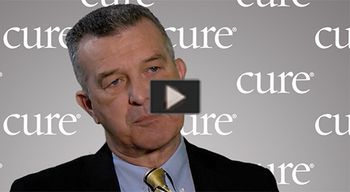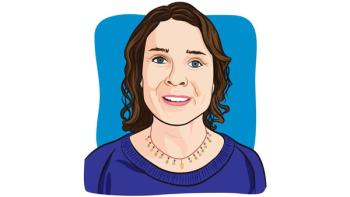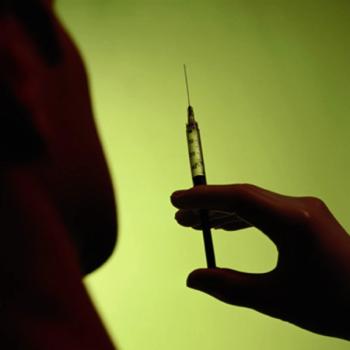
While causes for pneumonia were varied – including bacteria (14 percent), virus (22 percent) and unspecified (64 percent) – the majority of children did not have immune deficiencies recorded at the time of their pneumonia diagnosis.


While causes for pneumonia were varied – including bacteria (14 percent), virus (22 percent) and unspecified (64 percent) – the majority of children did not have immune deficiencies recorded at the time of their pneumonia diagnosis.

During her cancer journey, an author and her physicist friend traded insights.

NextSource Pharma, a small pharmaceutical company based in Florida, acquired the drug lomustine from Bristol-Myers Squibb, changed its brand name to Gleostine, and changed the price – by about 1,400 percent.

Adequate end-of-life care derives a variety of benefits for both patients and their families, including less invasive and ineffective intervention and less financial burden, said study author Justin Jordan, M.D., MPH, clinical director of the Pappas Center for Neuro-Oncology at Massachusetts General Hospital (MGH) Cancer Center.

Optune is a method of treatment where adhesive patches are applied to the patient’s scalp. The patch transductors deliver low-intensity electric fields – called Tumor Treating Fields – that stop the growth and division of GBM cells.

The FDA has granted Avastin (bevacizumab) a full approval for the treatment of adult patients with glioblastoma who progressed following prior therapy, according to Genentech, the manufacturer of the VEGF inhibitor.

After tracking the progress of about 20 patients with brain cancer who used cannabis, a neuro-oncologist found that the substance caused them no harm, had few side effects and did not interfere with conventional treatments.

Can a certain diet improve cancer outcomes?

Immunotherapies are largely unavailable to patients with brain cancer, but many of these approaches are being studied both in labs and in clinical trials, and there is hope that they will eventually play a role in the treatment of gliomas.

Quality-of-life care has benefits from the outset for these patients, but because some might confuse it with end-of-life support, neuro-oncologists may be hesitant about introducing it.

At its third annual gala, the magazine honored four professionals for their work helping people with glioblastoma.

When our bodies have experienced trauma, it is so easy to live in fear of what else may go wrong. But accepting that we don't know what will happen to us also means accepting that the worst is not always inevitable. Sometimes, despite our fears, we still thrive, and that is a reason to recognize that even if you've suffered, you can still be OK.

Those of us who have suffered often fear what can go wrong with them. But the more we know our bodies, the more we can love them and ourselves.

David Reardon, M.D., clinical director at the Center for Neuro-oncology at the Dana-Farber Cancer Institute, breaks down a common misconception that many people have about glioblastoma (GBM).

Both oncologists and primary care physicians do not provide adequate care to fully address cancer survivorship needs. Learn about why and solutions for people in their cancer journey.

David Reardon, M.D., clinical director at the Center for Neuro-oncology at the Dana-Farber Cancer Institute, offers advice for patients who have recently been diagnosed with glioblastoma (GBM).

In early 2015, Zika outbreaks caused widespread panic in many parts of North and South America. However, now researchers are exploring the possibility of putting the virus to good use: fighting glioblastoma multiforme (GBM), the most deadly type of brain cancer.

The Food and Drug Administration approved the first ever biosimilar to treat a variety of cancers.

Every six months, I get an MRI to check for recurrence or growth of my brain tumor. This is one of those times. To prepare for tomorrow, I try to remember not to forgo today.

A phase 2 trial – which is still enrolling patients – is investigating multiple targeted agents for the treatment of patients with glioblastoma (GBM).

Moving with a health problem comes with the logistical challenge of finding resources in a new place which is a task conquered through patience, kindness and a lot of organization.

The designation recognizes that the vaccine, an immunotherapy called SurVaxM, would treat a rare disease, defined as one that affects a patient population of less than 200,000 Americans. However, because it acts on a protein that appears in 80 percent of cancers generally, SurVaxM may have wider applications.

The Defeat GBM Research Collaborative is an effort based around three broad ideas: five years, $10 million and a question.

A 15-year brain tumor survivor offers advice and talks about advances since his diagnosis.

There are a number of treatment methods being explored to treat glioblastoma.